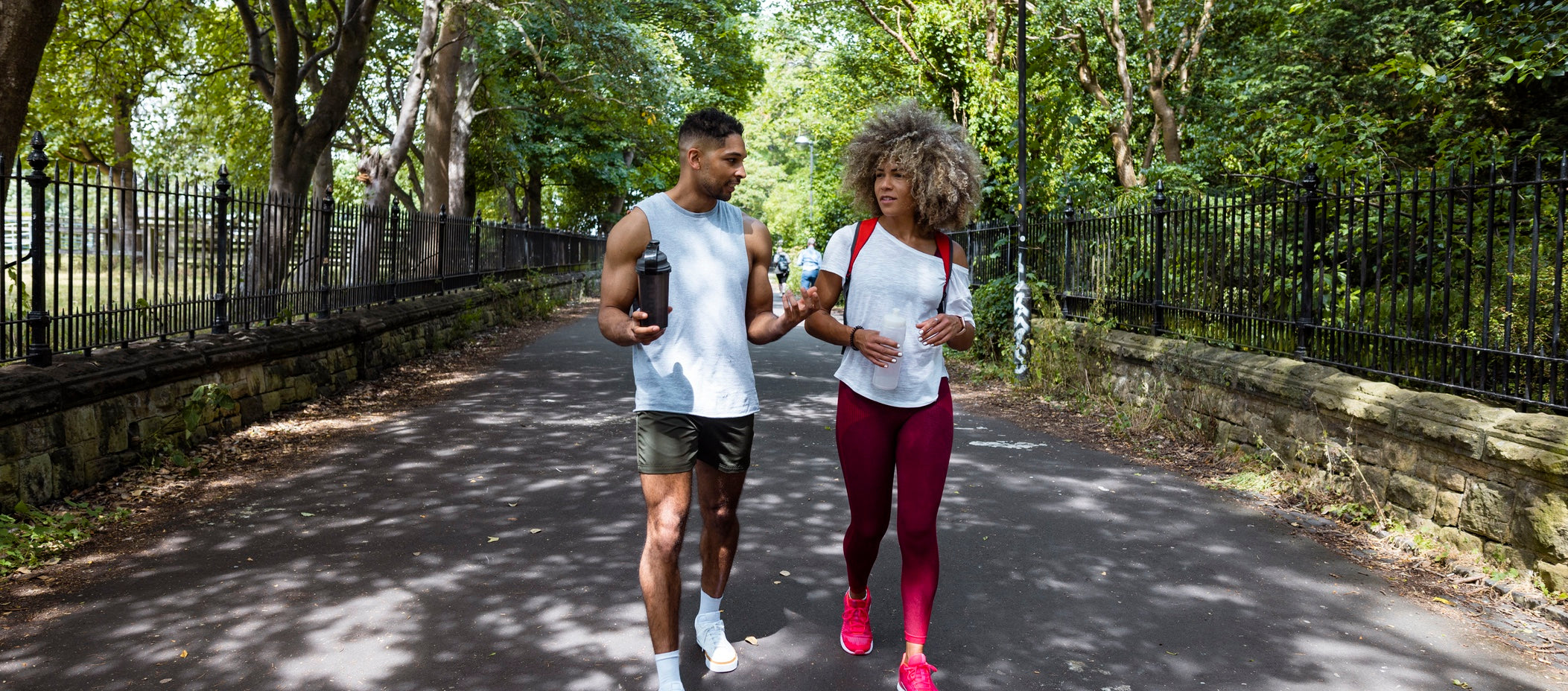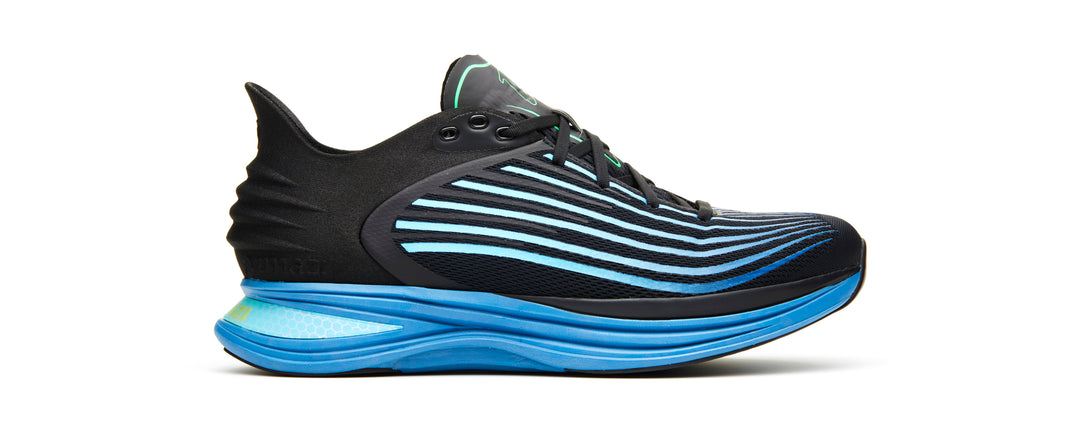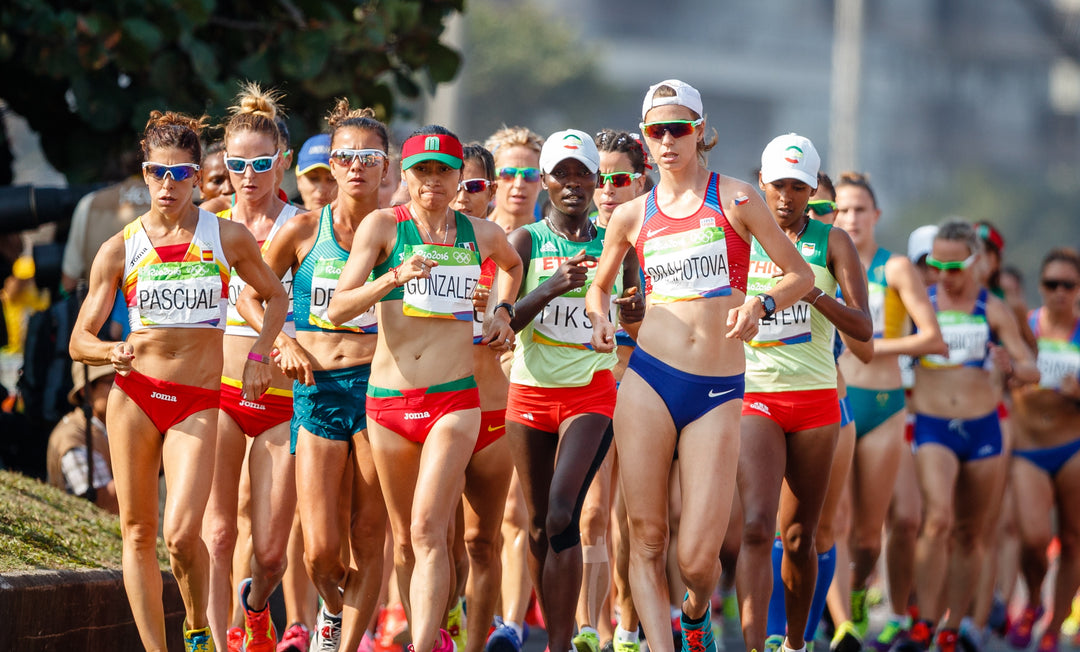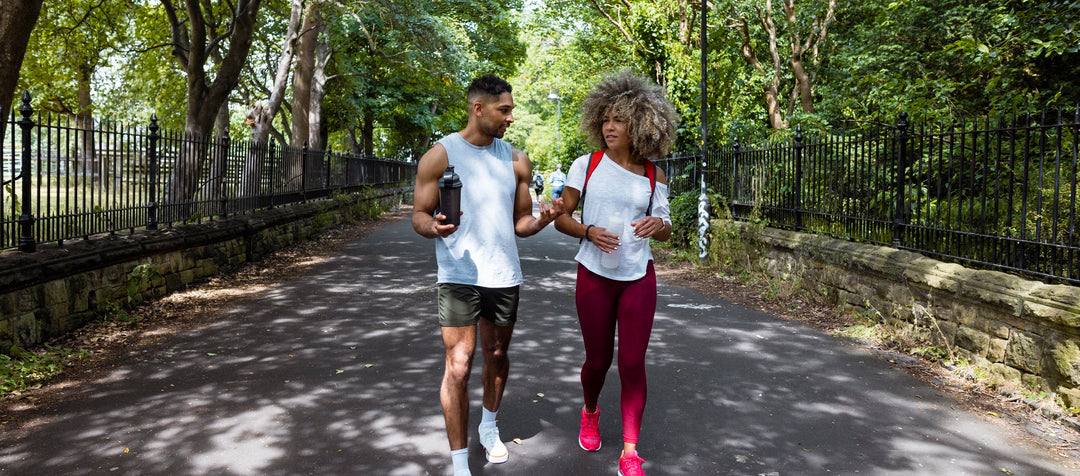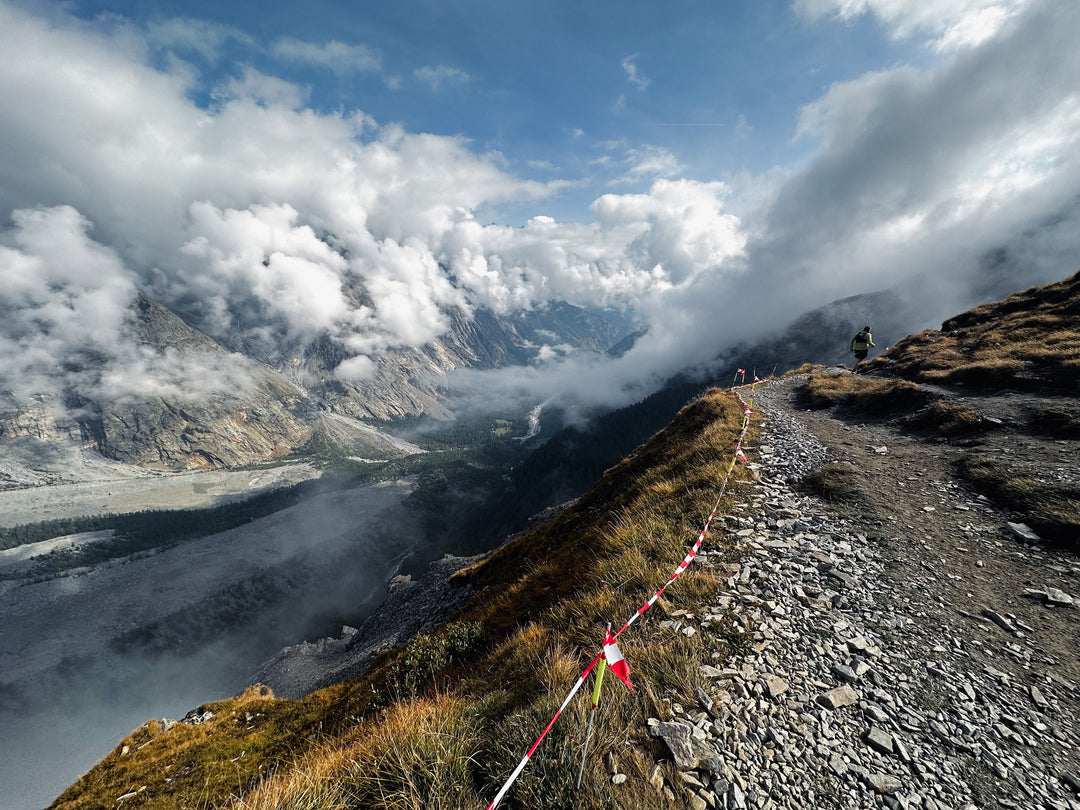Should a walking shoe be different from a running shoe?
A lot more people walk for exercise than run. And where do walkers go to find good shoes to wear? Running shoe stores. The fact is, walkers represent a surprisingly large percentage of sales in running shoe stores. It makes sense—walkers want shoes that are lightweight, high quality, fit well, supportive, and have lots of cushioning. Where do you find shoes like that? Running stores.
Of course you can walk in any kind of shoes you want, or even in no shoes at all. But most of us, when walking, appreciate the foot protection, traction, and cushioning that comes with...well it's often a running shoe. But should it be a running shoe? Would a shoe made specifically for walking be better?
Let’s dig into what makes a shoe that's specifically meant for walking different from other types of shoes. And in particular, what makes a well-designed walking shoe different from a running shoe? The answer is in how the shoe responds to the particular forces of walking, meaning what cushioning and stability effects you experience as you walk. As in most things, you want the right tool for the job, and in this case the job is walking. By walking, we're thinking about a pace of 16-28 minutes per mile.
Over the last century or more, walking shoes have been promoted according to their ability to support the arch, stabilize the heel, and encourage good alignment in the knees and hips. In a word, these shoes are “supportive.”
More recently, podiatrists figured out that certain problems may be addressed with rocker soles, in the forefoot, the heel, or both. A common example is the stiff forefoot rocker where the shape of the sole, combined with a shank to limit flexing, allows an arthritic foot to walk more comfortably, because the rocker performs the function of flexing at the ball of the foot. There are many versions of rocker soled shoes on the market. But there is another critical aspect to walking that is not addressed by supportive shoes or rocker soles: how the motion of your swing leg affects the forces under your foot, and how this plays into balance, pronation, and foot comfort.
First, a basic concept review to remain technically precise: The forces exerted under the foot result from the motion of taking a stride, and the leg motions are powered by their muscles. This seemingly obvious statement is important to help reorient our minds to think about the forces under the foot resulting from leg motions, rather than leg motions resulting from the forces under the foot. There is no power-pack under the stance foot that swings the other leg forward. This is as true going up or down a hill as it is on the level.
Okay, why does this matter? It matters because understanding the forces under the foot means understanding the leg motions. And the reason we care about forces is because shoes experience forces, and you want your shoe to deal with those forces in the healthiest, most supportive way possible.
Fortunately, since the swing leg moves exactly two stride lengths as you take a step forward, we can calculate the accelerations as a function of stride length and cadence. And from here, we can determine how those forces are distributed under the foot.
What we find is that most of the energy in walking on level ground is horizontal. It is the energy to swing one leg forward, and some of that energy is provided by the stance leg. As you go up hills or stairs, more energy is required to lift the body upward, but the motion is fundamentally the same as walking on the level. Ultimately, we can use this to determine how the forces are distributed under the heel and forefoot during a stride. This is the exact sort of information we need to design a walking specific shoe that offers the best balance of cushioning and stability.
Compared to running, walking has much lower impact forces, and there’s less of a difference between forefoot forces and rearfoot forces. Therefore, it’s important to design walking shoes differently from running shoes. We can have a softer overall feel (which improves comfort), because there is no flight time and associated sharp impact. And the difference between heel hardness and forefoot hardness is less, because walkers don’t have to propel themselves back up into the air. When you pay attention to the motions of the legs, you can tune the shoe to provide a more comfortable experience.
The best thing about this understanding is that the ratio of heel to forefoot doesn’t vary by weight or speed. Of course, there are differences for going up and down hills, but it would be impractical to design an uphill shoe or a downhill shoe, because you need the shoe to do both.
The Vimazi Z90 is designed according to the dynamics of walking so that you get the best balance of comfort and stability. The Z90 is not designed to brace the foot or to offer any correction. It is designed to help keep your feet extremely comfortable during walking.




